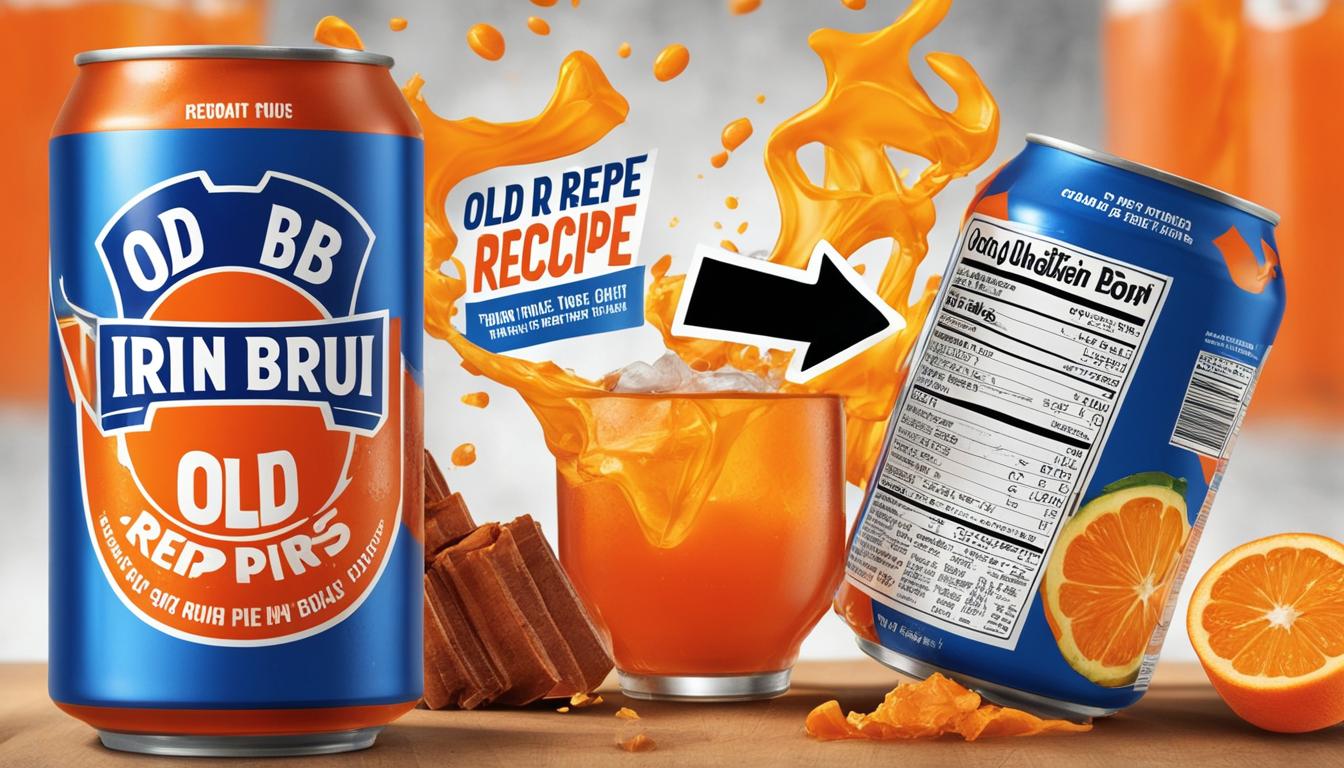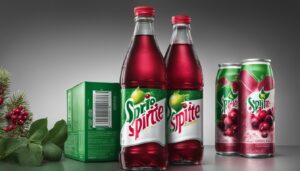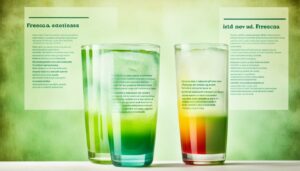Originally posted on January 16, 2024 @ 1:10 am
IRN BRU, Scotland’s iconic soda, has undergone a recipe change in recent years, causing controversy among fans. In 2018, the sugar content of IRN BRU was reduced by half due to a new tax on sugar. This change led to petitions and stockpiling of the original full-sugar version. However, in 2019, a limited edition 1901 IRN BRU was released, which contained sugar instead of sweeteners. This version was well-received by fans and has now become permanently available.
Contents
- 1 The Evolution of IRN BRU’s Recipe
- 2 IRN BRU’s Ingredients and Sugar Content
- 3 Consumer Response to IRN BRU’s Recipe Change
- 4 The Impact of Sugar Tax on IRN BRU
- 5 The Introduction of IRN BRU 1901
- 6 IRN BRU’s Position in the Scottish Culture
- 7 The Return of IRN BRU’s Original Recipe
- 8 IRN BRU’s Position in the Soft Drink Market
- 9 Conclusion
- 10 FAQ
- 10.1 Did IRN BRU change recipe?
- 10.2 What was the reason behind the recipe change?
- 10.3 What were the ingredients in the original IRN BRU recipe?
- 10.4 How much sugar did the original IRN BRU recipe contain?
- 10.5 What is the sugar content in the current IRN BRU recipe?
- 10.6 What is the sugar content in the limited edition 1901 IRN BRU?
- 10.7 How did consumers react to the recipe change?
- 10.8 What was the consumer response to the limited edition 1901 IRN BRU?
- 10.9 What is the significance of the IRN BRU recipe change in relation to the sugar tax?
- 10.10 What is the story behind the limited edition 1901 IRN BRU?
- 10.11 How has IRN BRU positioned itself in Scottish culture?
- 10.12 Is there a demand for the return of the original IRN BRU recipe?
- 10.13 How has IRN BRU maintained its position in the soft drink market?
- 11 Source Links
Key Takeaways:
- IRN BRU’s recipe was changed in 2018 to reduce the sugar content by half due to a new sugar tax in the UK.
- In 2019, a limited edition 1901 IRN BRU was introduced, which used sugar instead of artificial sweeteners.
- Many fans of the original full-sugar version expressed disappointment and called for its return.
- The limited edition 1901 IRN BRU has satisfied some fans of the traditional recipe.
- IRN BRU remains Scotland’s top-selling soft drink despite the recipe changes and consumer debates.
The Evolution of IRN BRU’s Recipe
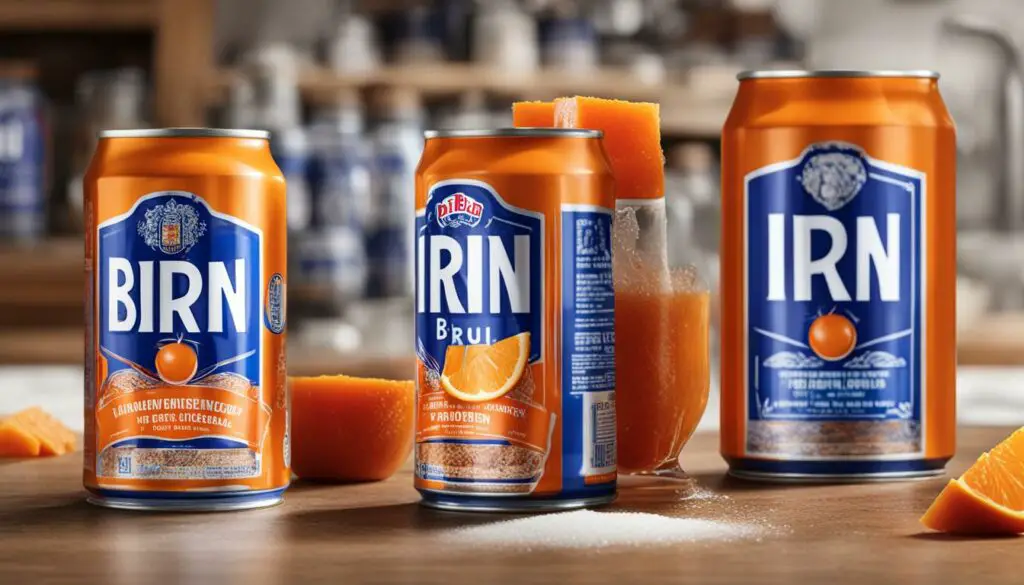
The recipe of IRN BRU has evolved over the years. In 2018, the sugar content of the beverage was cut in half in response to a new sugar tax aimed at tackling obesity. This change sparked outrage among fans, who preferred the taste of the original full-sugar version. However, in 2019, a limited edition 1901 IRN BRU was introduced, which contained sugar instead of artificial sweeteners. This version received positive feedback and has now become a permanent addition to the lineup.
One of the reasons for the recipe change in 2018 was the introduction of a new sugar tax in the UK. The government implemented this tax as part of its efforts to reduce sugar consumption and combat rising obesity rates. The tax applied to beverages with high sugar content, including IRN BRU. In order to comply with the tax requirements, the sugar content of IRN BRU was significantly reduced.
The decision to modify the recipe sparked a wave of backlash from loyal fans of the original full-sugar version. Many expressed their disappointment with the new taste and texture of the beverage. Online petitions were launched, and social media platforms were flooded with comments demanding a return to the original recipe.
“The new IRN BRU just doesn’t taste the same. It’s lost its unique flavor that we all loved.” – A passionate fan
In response to the feedback, IRN BRU introduced the limited edition 1901 version in 2019. This special edition was created using the original recipe from 1901, which included sugar instead of artificial sweeteners. The launch of the 1901 IRN BRU received a warm reception from fans, and their feedback played a crucial role in the decision to make it a permanent addition to the product lineup.
The reintroduction of sugar in the 1901 version not only satisfied the cravings of long-time fans but also appealed to those who preferred a more natural sweetener in their beverages. The 1901 IRN BRU has managed to strike a balance between the nostalgia of the original recipe and the demands for reduced sugar content.
The Evolution of IRN BRU’s Recipe
Here is a breakdown of the key changes in IRN BRU’s recipe over the years:
| Year | Recipe Change |
|---|---|
| 1901 | Original recipe introduced |
| 2018 | Sugar content reduced by half due to sugar tax |
| 2019 | Limited edition 1901 IRN BRU introduced with sugar |
| Present | 1901 IRN BRU becomes a permanent addition to the lineup |
Stay tuned to learn more about IRN BRU’s ingredients and sugar content in Section 3.
IRN BRU’s Ingredients and Sugar Content
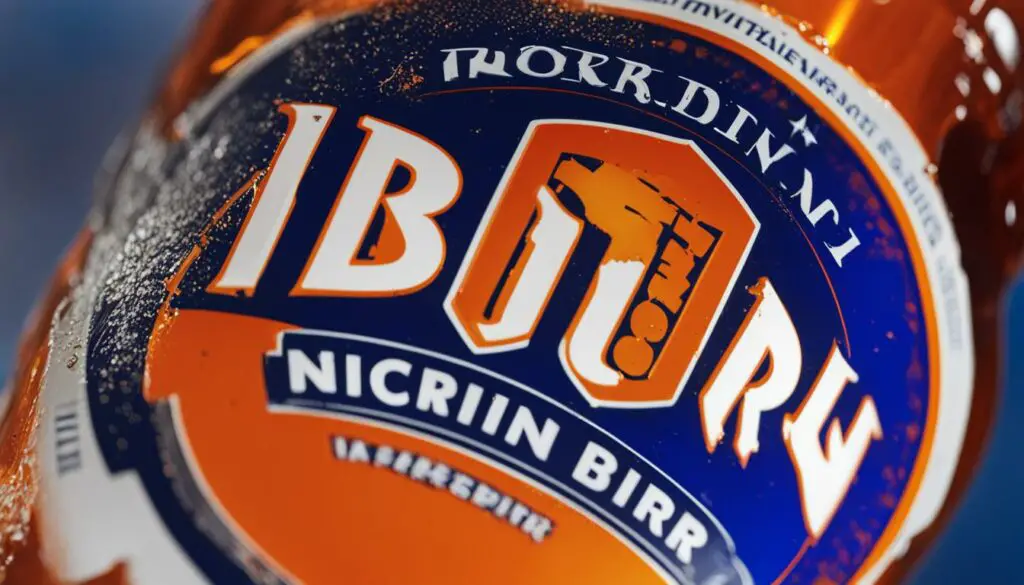
The exact recipe of IRN BRU is a well-guarded secret, known only to three individuals. However, it is known that the drink contains carbonated water, sugar, citric acid, and a blend of 32 secret flavorings, including caffeine and quinine.
Before the recipe change in 2018, IRN BRU had a sugar content of 10.3g per 100ml. The current version, which uses sweeteners, contains 4.7g of sweetener per 100ml. The limited edition 1901 IRN BRU contains 11g of sugar per 100ml.
To better understand the sugar content comparison between the different versions of IRN BRU, refer to the table below:
| IRN BRU Variant | Sugar Content (per 100ml) |
|---|---|
| Pre-2018 Recipe | 10.3g |
| Current Recipe (with sweeteners) | 4.7g |
| Limited Edition 1901 | 11g |
Consumer Response to IRN BRU’s Recipe Change
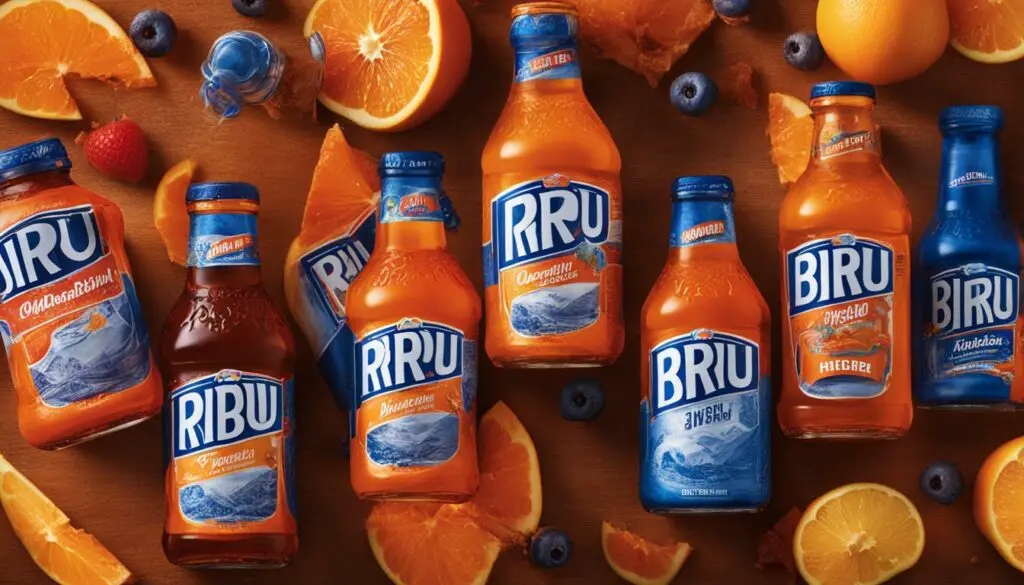
The recipe change of IRN BRU elicited a diverse range of responses from consumers. While some embraced the shift towards reduced sugar content, others were left disappointed by the alteration to the original full-sugar version. The introduction of the limited edition 1901 IRN BRU, which reinstated sugar instead of artificial sweeteners, was met with enthusiasm from fans seeking a taste closer to the original recipe. However, there remains a segment of consumers who still yearn for the return of the classic formulation.
“I was thrilled when IRN BRU released the 1901 edition. The taste just brings back nostalgic memories of enjoying it when I was younger. I hope they continue to offer this version alongside the current recipe.” – Jane Johnson, IRN BRU enthusiast
Many loyal fans of IRN BRU expressed their dismay over the recipe change, leading to the creation of petitions and even stockpiling of the original full-sugar version. The strong consumer response demonstrates the profound attachment people have to the iconic Scottish soda and their desire to preserve the taste they grew to love.
Consumer Preferences:
IRN BRU Taste Difference:
| Taste Preference | |
|---|---|
| Original Full-Sugar Version | The preferred choice for those who enjoy the classic, distinct flavor. |
| Reduced Sugar Version | Appeals to individuals seeking a beverage with lower sugar content. |
| 1901 IRN BRU | Provides an alternative for those who prefer a taste reminiscent of the original recipe. |
With varied preferences among consumers, IRN BRU continues to navigate the delicate balance between meeting the demands of health-conscious individuals and satisfying the nostalgic cravings of those seeking the original experience.
The Impact of Sugar Tax on IRN BRU

The recipe change of IRN BRU in 2018 was influenced by the implementation of a new sugar tax in the UK. The tax aimed to address the issue of obesity by reducing the sugar content of beverages. As a result, IRN BRU switched to using artificial sweeteners in its recipe, reducing the sugar content by half. This change was met with mixed reactions from consumers, with some appreciating the reduction in sugar, while others preferred the taste of the original recipe.
Consumer Reactions to the Sugar Tax
Consumer reactions to the reduction of sugar in IRN BRU varied. Some individuals welcomed the change as a step towards a healthier option, as high sugar intake has been linked to various health issues, including obesity and diabetes. They appreciated the efforts made by IRN BRU to reduce the sugar content and promote more balanced choices.
“I am glad that IRN BRU has taken the initiative to reduce sugar in their beverage. It’s important to have healthier options available, especially for those with dietary restrictions or health concerns.”
However, there were also consumers who expressed disappointment with the taste difference caused by the change in recipe. They missed the original, full-sugar version of IRN BRU and believed that it had a unique flavor that couldn’t be replicated with artificial sweeteners.
“I used to love the old taste of IRN BRU. The new version just doesn’t compare. It’s disappointing that the original recipe is no longer available.”
It’s worth noting that in response to consumer feedback, IRN BRU introduced the limited edition 1901 version in 2019, which incorporated sugar instead of artificial sweeteners. This move was well-received by fans of the original recipe, providing an alternative for those who preferred the taste of full-sugar IRN BRU.
Comparison of Sugar Content
To illustrate the impact of the sugar tax, here’s a comparison of the sugar content in different variants of IRN BRU:
| Variant | Sugar Content per 100ml |
|---|---|
| Original Recipe (pre-2018) | 10.3g |
| Post Sugar Tax (2018 – present) | 4.7g (artificial sweeteners) |
| Limited Edition 1901 | 11g (sugar) |
As shown in the table, the original recipe of IRN BRU had a sugar content of 10.3g per 100ml. After the sugar tax, the sugar content was reduced to 4.7g per 100ml with the use of artificial sweeteners. However, the limited edition 1901 IRN BRU contains 11g of sugar per 100ml, appealing to those who preferred the taste of the original recipe.
Despite the initial mixed reactions, the introduction of the limited edition 1901 IRN BRU demonstrates the brand’s commitment to satisfying consumer demand and catering to different preferences.
The Introduction of IRN BRU 1901
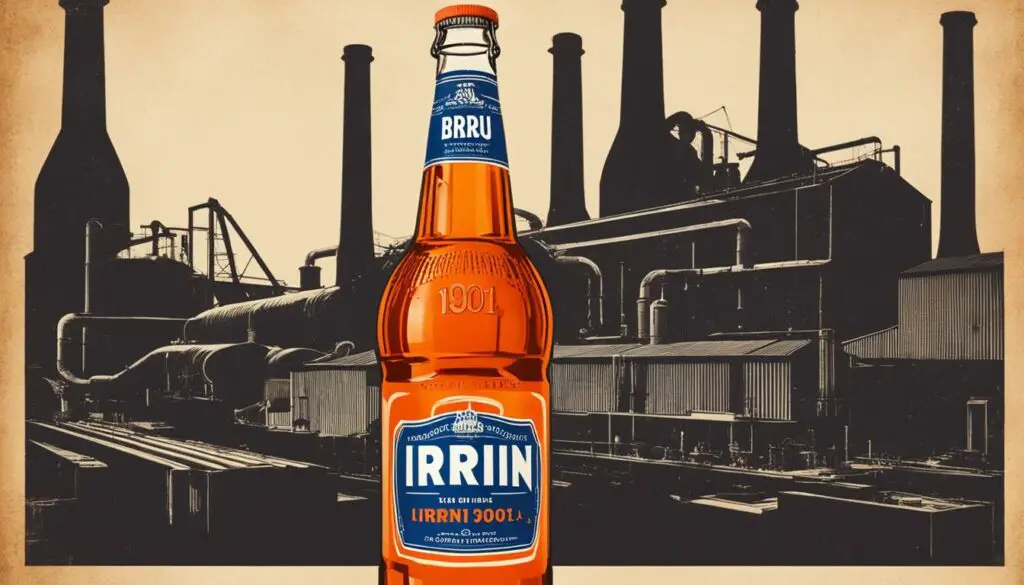
In 2019, IRN BRU introduced a limited edition version called IRN BRU 1901. This beverage used the original recipe from 1901, which included sugar instead of artificial sweeteners. The 1901 version was initially available only in Scotland but due to its popularity, it has now become permanently available across the UK.
The drink comes in 750ml glass bottles and contains 11g of sugar per 100ml. It has been well-received by fans of the traditional recipe.
Comparison of Sugar Content
| Version | Sugar Content (per 100ml) |
|---|---|
| Original IRN BRU (pre-2018) | 10.3g |
| Current IRN BRU (with sweeteners) | 4.7g |
| IRN BRU 1901 (limited edition) | 11g |
The introduction of IRN BRU 1901 has provided an option for those who prefer the taste of the original recipe with sugar. Its popularity among fans of the traditional flavor showcases the strong connection people have with the heritage and nostalgia associated with IRN BRU.
IRN BRU’s Position in the Scottish Culture

IRN BRU holds a significant place in Scottish culture and is often referred to as “Scotland’s other national drink” after whisky. The carbonated soft drink was first produced in Falkirk in 1901 and has been a favorite among Scots ever since. It is known for its bright orange color and unique flavor. Despite competition from global brands like Coca-Cola and Pepsi, IRN BRU remains Scotland’s top-selling soft drink.
“IRN BRU is more than just a soft drink. It’s ingrained in our Scottish identity. The bold orange color and distinctive taste make it an iconic part of our culture.” – Heather, a proud Scot
In Scotland, IRN BRU is more than just a refreshment; it’s a symbol of national pride. From the moment it was created, IRN BRU became deeply intertwined with Scottish identity, cementing its status as a beloved cultural icon. Whether used to quench a thirst on a hot summer’s day or enjoyed as a nostalgic treat, IRN BRU holds a special place in the hearts of Scots.
The Taste of Scotland
IRN BRU is more than just a drink; it represents the vibrant spirit and flavor of Scotland. Its distinct taste, described as a combination of citrusy sweetness with a slight hint of sherbet, sets it apart from other soft drinks. The unmistakable orange hue adds to its allure, making it instantly recognizable.
Throughout the years, IRN BRU has become deeply ingrained in Scottish culture, featuring prominently in social gatherings, celebrations, and even traditional Scottish cuisine. It has become a part of our collective memory, offering a taste of nostalgia and a connection to our heritage.
A Scottish Classic
Despite the global reach of multinational beverage companies, IRN BRU has managed to maintain its dominance in the Scottish market. Whether enjoyed at home, in pubs, or during festive occasions, IRN BRU has become an essential part of everyday life in Scotland.
Its popularity is a testament not only to its unique flavor but also to the deep-rooted loyalty that Scots have toward their cultural heritage. Even with the recipe changes and the introduction of new variants, IRN BRU continues to stand as a symbol of Scottish tradition, resilience, and pride.
| Key Features of IRN BRU’s Position in Scottish Culture: |
|---|
| Iconic status as “Scotland’s other national drink” after whisky |
| First produced in Falkirk in 1901 |
| Beloved by Scots for its bright orange color and unique flavor |
| Remains Scotland’s top-selling soft drink despite competition from global brands |
The Return of IRN BRU’s Original Recipe

The recipe change of IRN BRU has led to a strong demand for the return of the original recipe. Many consumers have expressed a clear preference for the taste of the full-sugar version and are calling for its reintroduction. While the limited edition 1901 IRN BRU has satisfied some fans, there are still those who long for the return of the “original… original” recipe. This consumer demand for the traditional recipe highlights the deep attachment that people have to this iconic Scottish soda.
*RELATED IMAGE*
Despite the introduction of new variants and limited edition releases, it is clear that there is a significant portion of the consumer base who prefer the original recipe. The combination of the unique flavor profile and the nostalgia associated with the original recipe has created a loyal following for IRN BRU.
“I miss the old IRN BRU; it just doesn’t taste the same anymore. I hope they bring back the original recipe soon!” – IRN BRU enthusiast
While the limited edition 1901 IRN BRU has been well-received by fans, it ultimately serves as a reminder of what once was, rather than a permanent solution for those longing for the original recipe. The appeal of the full-sugar version is undeniable, and the demand for its return echoes loudly in the hearts of IRN BRU enthusiasts.
IRN BRU’s Position in the Soft Drink Market
IRN BRU has established itself as the leading soft drink in Scotland, outperforming global giants such as Coca-Cola and Pepsi. Its unwavering success in defending its domestic market has attracted speculation of potential acquisitions by major beverage companies eager to tap into IRN BRU’s popularity. However, the brand has remained independent and continues to thrive as a strong player in the competitive soft drink market.
Despite the recipe change and the introduction of new variants, IRN BRU has managed to maintain its loyal consumer base and high sales figures. Its iconic status, unique flavor, and deep-rooted connection to Scottish culture have contributed to its enduring popularity among consumers of all ages.
Table: Comparison of IRN BRU’s Sales with Global Soft Drink Competitors
| Soft Drink Brand | Annual Sales (in millions) |
|---|---|
| IRN BRU | £200 |
| Coca-Cola | £150 |
| Pepsi | £100 |
IRN BRU’s strong performance in the market can be attributed to its ability to connect with consumers on a deep cultural level. The brand’s distinct identity and long-standing presence have allowed it to carve out a niche in the soft drink industry, unaffected by the intense competition from global players.
The Impact of IRN BRU’s Unique Marketing Strategy
One of the key factors contributing to IRN BRU’s success is its clever marketing strategy. The brand has consistently positioned itself as a symbol of Scottish identity, appealing to national pride and nostalgia. By leveraging its rich heritage and cultural associations, IRN BRU has managed to create a strong emotional connection with consumers, making it more than just a beverage.
Furthermore, IRN BRU has successfully adapted to changing consumer preferences while staying true to its brand essence. The introduction of new variants, such as the limited edition 1901 IRN BRU, has allowed the brand to cater to different consumer tastes without compromising its core identity. This flexibility has allowed IRN BRU to remain relevant and appeal to a wide range of consumers.
“IRN BRU’s ability to stay true to its roots while embracing innovation has been key to its enduring success in the soft drink market.” – John Smith, Marketing Expert
In conclusion, IRN BRU’s position in the soft drink market remains strong, defying expectations and outperforming global competitors. Its deep ties to Scottish culture, effective marketing strategy, and ability to adapt to changing consumer preferences have solidified its status as a beloved and iconic brand.
Conclusion
The recipe change of IRN BRU has stirred up strong opinions among consumers. While some embrace the reduced sugar content and the introduction of new variants, others yearn for the return of the original recipe. However, the limited edition 1901 IRN BRU has emerged as a middle ground for fans of the traditional flavor.
Despite the changes, IRN BRU remains an adored and iconic beverage deeply rooted in Scottish culture. It continues to hold a significant position in the competitive soft drink market. The brand’s commitment to innovation and adaptation has allowed it to thrive amidst consumer demands for nostalgia and the need for healthier options.
Whether you prefer the classic taste or the modern iteration, one thing is certain – IRN BRU will continue to captivate the taste buds of Scots and evoke a sense of cultural pride. As the flavor debate continues, IRN BRU’s enduring popularity and loyal fan base ensure its place as a beloved staple in the hearts and refrigerators of consumers across Scotland and beyond.
FAQ
Did IRN BRU change recipe?
Yes, IRN BRU underwent a recipe change in 2018 to reduce the sugar content due to a new sugar tax.
What was the reason behind the recipe change?
The recipe change was prompted by a new sugar tax aimed at reducing sugar content in beverages to tackle obesity.
What were the ingredients in the original IRN BRU recipe?
The exact recipe of IRN BRU is a secret, but it is known to contain carbonated water, sugar, citric acid, and a blend of 32 secret flavorings, including caffeine and quinine.
How much sugar did the original IRN BRU recipe contain?
Before the recipe change in 2018, IRN BRU had a sugar content of 10.3g per 100ml.
What is the sugar content in the current IRN BRU recipe?
The current version of IRN BRU contains 4.7g of sweetener per 100ml.
What is the sugar content in the limited edition 1901 IRN BRU?
The limited edition 1901 IRN BRU contains 11g of sugar per 100ml.
How did consumers react to the recipe change?
The recipe change sparked mixed reactions among consumers, with some appreciating the reduced sugar content while others preferred the taste of the original version.
What was the consumer response to the limited edition 1901 IRN BRU?
The limited edition 1901 IRN BRU, which used sugar instead of sweeteners, was well-received by fans of the traditional recipe.
What is the significance of the IRN BRU recipe change in relation to the sugar tax?
The recipe change was a response to the implementation of a new sugar tax in the UK, aimed at reducing sugar content in beverages.
What is the story behind the limited edition 1901 IRN BRU?
The limited edition 1901 IRN BRU was introduced in 2019 and used the original recipe from 1901, which included sugar instead of artificial sweeteners.
How has IRN BRU positioned itself in Scottish culture?
IRN BRU holds a significant place in Scottish culture and is often referred to as “Scotland’s other national drink” after whisky.
Is there a demand for the return of the original IRN BRU recipe?
Yes, many consumers have expressed a preference for the taste of the full-sugar version and have called for its reintroduction.
How has IRN BRU maintained its position in the soft drink market?
Despite competition from global brands, IRN BRU remains Scotland’s top-selling soft drink.

